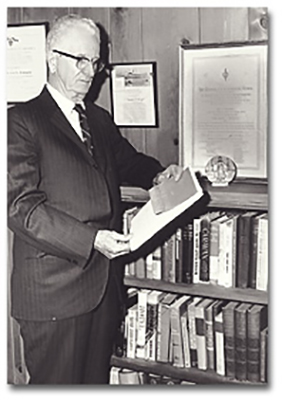
Theodore Paul Wright, also known as T. P. Wright, was a U.S. aeronautical engineer and educator. His career spanned numerous positions, including Naval Aircraft Inspector, Executive Engineer at the Curtiss Aeroplane Company, Chief Engineer of the Curtiss-Wright Corporation. He was a member of the National Defense Advisory Committee under President Franklin D. Roosevelt, Assistant Chief of the Aircraft Section in the Office of Production Management, Chairman of the Joint Aircraft Committee, Director of the Aircraft Resources Control Office and a member of the War Production Board.
While studying airplane manufacturing, Wright determined that for every doubling of airplane production the labor requirement was reduced by 10-15%. In 1936, he detailed his full findings in the paper “Factors Affecting the Costs of Airplanes.” Now known as “Wright’s Law”, or experience curve effects, the paper described that “we learn by doing” and that the cost of each unit produced decreases as a function of the cumulative number of units produced.
With his extensive knowledge, Wright played a key role in expanding U.S. aircraft production, especially in developing essential statistical tools that provided accurate information on industrial capacity and measured worker efficiency.

Y = cumulative average time (or cost) per unit
X = cumulative number of units produced
a = time (or cost) required to produce 1st unit
b = slope of the function

Moore’s Law – named after Gordon Moore for his work in 1965 – focuses on cost as a function of time. Specifically, it states that the number of transistors on a chip would double every two years. Wright’s Law on the other hand forecasts cost as a function of units produced.
Measured over the decade to 2015, ARK found that a price forecast based on Wright’s Law was 40% more accurate than one based on Moore’s Law.
A Real-Life Use Case For Wright’s Law
Lithium-ion batteries offer a good case study highlighting the benefit of using Wright’s Law over Moore’s Law.
Based on Moore’s Law and as shown in the chart, most analysts would conclude that lithium-ion batteries matured by 2005. After two decades of declining roughly 10% on average per year, lithium ion battery costs flattened out.
However, those 10% declines pushed the unit-cost of lithium-ion batteries across a critical threshold, enabling the production of electric vehicles at scale. One 200+ mile range electric vehicle has as much battery power as 5,000 iPhones, so if just 1% of auto sales were to convert from gas powered to electric, they would more than double the demand for batteries relative to those required for smartphones globally. Recognizing that batteries were about to hit this tipping point, analysts could have forecasted that the time required for the cumulative doubling of production would drop precipitously and that the decline in costs would reaccelerate, as shown in the following charts.
The decline in prices has opened up new segments of the auto market to lithium-ion batteries which, in turn, is pushing them toward an even larger market, utility-scale energy storage.


 Actively Managed Equity
Actively Managed Equity Overview: All Strategies
Overview: All Strategies Investor Resources
Investor Resources Indexed Equity
Indexed Equity Private Equity
Private Equity Digital Assets
Digital Assets Invest In The Future Today
Invest In The Future Today
 Take Advantage Of Market Inefficiencies
Take Advantage Of Market Inefficiencies
 Make The World A Better Place
Make The World A Better Place
 Articles
Articles Podcasts
Podcasts White Papers
White Papers Newsletters
Newsletters Videos
Videos Big Ideas 2024
Big Ideas 2024
